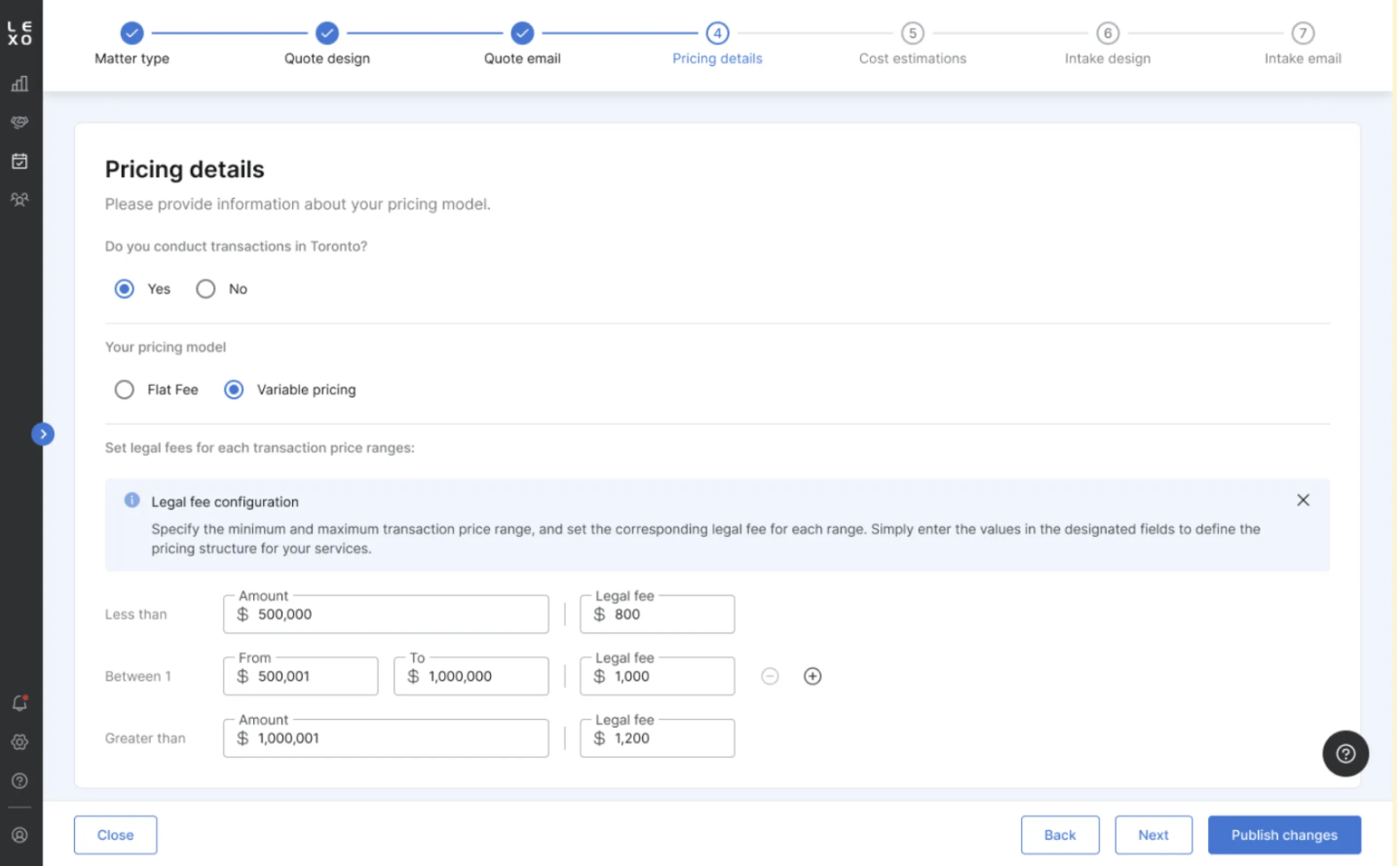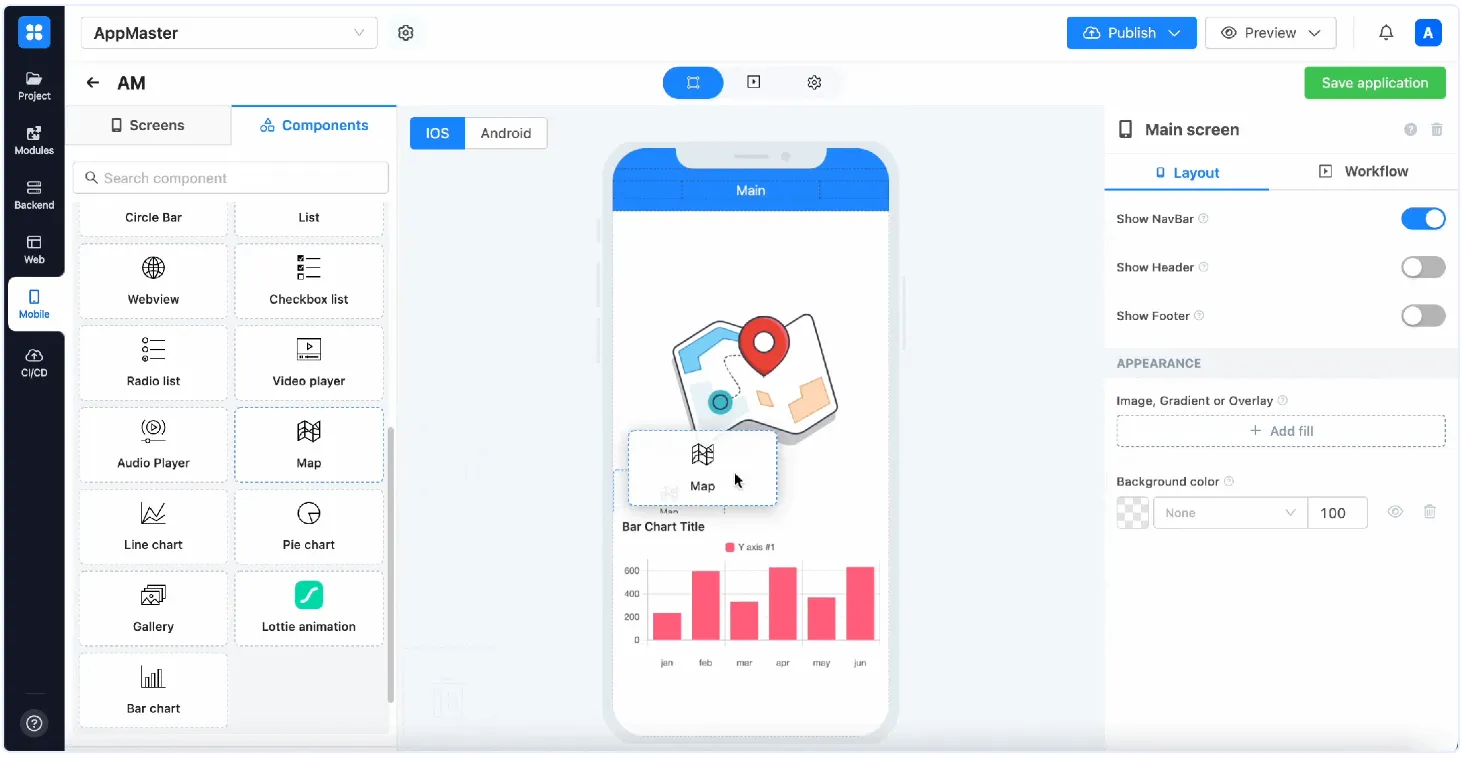Question: Is low-code/no-code the future of software development? As a UI/UX design agency collaborating with diverse companies across industries, we at Eleken have a chance to spot market tendencies firsthand. And while it's challenging to predict the absolute future trajectory of the industry, there are some compelling reasons to believe that low-code and no-code approaches will continue to flourish. And here’s why.
5 reasons low-code/no-code platforms promise success
Indeed, Gartner reports about 20% growth in the no-code/low-code market size, which currently stands at approximately $14 billion. So, the potential for new players to join this market is there. And the market shows us many signs to believe Gartner was right.
Reason 1: There is a shortage of skilled developers
Despite the high demand, there aren't enough skilled developers to meet job market needs. In 2021, there was a shortage of 40 million tech talents globally, and it's projected to hit 85.2 million by 2030. Data analytics, IT, and mobile/web design industries are expected to face disruptions due to a skills gap and shortage of IT talent, while the need for application development will continue to rise.

Hiring and training more people won’t solve this problem, but low-code and no-code development can. It enables non-technical users to build applications with minimal coding knowledge, increasing productivity, and decreasing reliance on hard-to-find tech skills.
Even industries traditionally requiring highly skilled tech professionals, such as those involved in AI and machine learning, can now leverage the current functionalities offered by no-code/low-code solutions. For example, Amazon Web Services and their Amazon SageMaker Canvas, a no-code machine learning service for business analysts, or UiPath, a low-code business automation platform that applies AI in computer/machine vision, effectively addressing a diverse range of problems.
Reason 2: There is a need for process automation
Research made by Forrester shows that large businesses appreciate low code for its flexibility (83%), speed (63%), and process automation (67%).
In the age of digital transformation, even non-core functions within organizations strive to automate processes. Still, as said earlier, finding developers, not to mention the necessary time and budget, can be challenging to achieve this goal. Consequently, an increasing number of businesses are opting for low-code/no-code solutions that make application development more accessible.
Airtable, Accern, UiPath, and Zapier are some of the well-known low-code/no-code solutions that successfully help businesses automate their work processes.
Reason 3: Low-code and no-code startups are raising funding
Venture capitalists and angel investors are showing a keen interest in startups that leverage low-code and no-code technologies as they see them making app development more accessible for everyone. If you follow the news on websites like CrunchBase, TechCrunch, and the like, you’ll definitely notice these low-code/no-code trends.
For instance
- Toqio, a fintech startup with a low-code platform enabling businesses to quickly create and integrate financial solutions, has secured €20 million in Series A funding in September 2022.
- A low-code machine learning platform Predibase secured a $12.2 million expansion in May 2023, adding to its $16.25 million Series A funding from the previous year.
- Accern raised $13 million in funding to speed up the advancement of AI for enterprises through its no-code platform.
- We're proud to share an example from our own experience as well. In August 2022, following a redesign by Eleken, our client Datawisp successfully secured a $3.6 million seed round for its no-code data analysis platform.


Reason 4: Low-code/no-code adoption releases your developers from routine tasks
Using low-code/no-code tools not only transforms your approach to development but also lightens the workload on your engineering teams. According to Forrester's research, 80% of respondents agree that integrating low-code solutions frees developers' time, allowing them to focus on more strategic and higher-level projects.
This way, in designing the learning system Youvet, our team used a low-code tool, Retool, to build and test the admin panel, allowing developers to concentrate on other critical tasks demanding advanced technical knowledge. We also used a no-code platform Framer to build a landing page. This strategic use of tools not only saved developers' time but also allowed us to launch the landing page well in advance of the product, facilitating effective pre-launch marketing.


So, adopting low-code and no-code not only enhances productivity but also empowers the team to channel their expertise toward innovation and complex problem-solving, ultimately driving greater business success.
Reason 5: Low-code/no-code platforms enable faster application development by eliminating the need for manual coding
According to a survey conducted by Mendix, 71% out of 2,000 surveyed low-code developers reported being able to deliver applications in less than three months. This fact proves that using low-code/no-code technologies allows businesses to quickly respond to changing market demands and deploy applications more rapidly.
This is especially useful for startups in the early stage of development, aiming to build a demo or an MVP (read our article to learn what makes a demo, MVP, and full product different). It enables them to effectively test and launch products in beta, offering a more practical option in both time and hiring compared to custom coding.
We’ve also witnessed this trend in our experience. Our recent client, Lexo built their first version of a prototype using Microsoft Dynamics, a low-code CRM constructor tool. This technology not only accelerated delivery but also saved crucial time and resources, proving particularly beneficial for a startup at this stage of its development.
However, certain limitations of this platform prompted Lexo to seek our assistance in enhancing the design to be able to meet their customers' needs and support the ongoing success of their business.


This gets us to the next question about the no-code/low-code platforms future: Could these solutions be so effective that hiring high-code developers and professional designers becomes unnecessary? The short answer is “No”, but let’s dive deeper into the topic.
Will no-code/low-code replace custom development?
Low-code/no-code market has indeed seen significant growth recently, but there is still a long way to go before these platforms replace custom application development entirely as there are certain low-code/no-code challenges waiting for those who decide to adopt this technology.
- Low-code/no-code platforms may not offer the same level of customization as custom coding.
No-code solutions thrive in industries with clearly defined use cases and significant demand from non-developers, especially when the end user is also the buyer. However, when dealing with larger enterprises seeking extensive customization, the use of custom code becomes imperative. In such cases, a drag-and-drop approach may fall short in meeting the detailed requirements of business/individuals needs.
Actually, this was the case with our client Lexo whom we mentioned earlier. Microsoft Dynamics, the platform they used to build a prototype, lacked the necessary level of customization to allow users to tailor the tool to their specific needs. So, to win over competitors, Lexo sought the assistance of professional UI/UX designers and developers in enhancing the flexibility and customizability of the platform design.

- Complex applications with unique requirements may still require manual coding to achieve the desired functionality.
No-code and low-code tools make it possible to quickly create applications as they often come with pre-built templates and drag-and-drop functionality. And that’s the reason the fundamental idea behind no-code/low-code revolves around automating common use cases. But at the same time, it’s clear that pre-coded element interfaces can’t address every unique case, and it’s usually these unique cases that prompt users to rely on their existing workflows.

Consider SaaS development, specifically cloud CRM. Traditionally, creating such a system involves testing and analytics. No-code platforms often have built-in tools for monitoring performance, analyzing user behavior, and visualizing data. This user-friendly interface enables business analysts and non-technical stakeholders to actively engage in analytics without deep coding knowledge.
However, for a company aiming to implement a comprehensive CRM system to manage diverse customer interactions, sales pipelines, and international marketing campaigns, complexity arises. The CRM requirements may include complex integrations, advanced machine learning for predictive analytics, and tailored workflows. Achieving this high level of customization and complexity will require manual coding.
- No-code/low-code solutions are challenging to adopt.
For low-code/no-code platforms, where users may not be tech-savvy, the product adoption process depends on how easily users understand what the platform does and how it can help solve their problems. Usually, companies boost engagement and adoption with an intuitive and usable UI/UX design but it requires hiring professional designers and programmers.
For instance, let’s take our client Stradigi AI – a low-code business process automation platform. Their platform became difficult to adopt for business users, so to stay competitive they had to hire us (professional UI/UX designers) to make their tool’s interface simple and intuitive.
This case shows how important it is for businesses to invest in the intuitive adoption of their low-code/no-code tools and that you can’t go without custom design and coding here.

- These platforms are challenging to design.
Being a part of a UI/UX design agency, I just can’t help but mention that low-code/no-code platforms are difficult to design. They require
- balancing simplicity for non-technical users and flexibility for those with coding capabilities.
- making a unified and user-friendly interface for users with varying technical expertise.
- integrating advanced features while maintaining a user-friendly design and more.
This way, when we were designing an MVP for a quite complex no-code graph visualization platform that specializes in fraud detection, we had to make the interface as simple and intuitive as possible. This was key to realizing the platform's main advantage: "shortening the development time of a network visualization solution by 6 months."

- High-code development is more than writing code.
The final point I’d like to make here is that when developing applications, the product team handles various tasks beyond writing code. They test, debug, do version control and sandboxing, think out intuitive user experience, and more. So, if you decide to eliminate coding in favor of no-code and low-code solutions, it may also come with the loss of associated benefits.
That’s why, I believe low-code/no-code may not completely replace coding, but it could significantly reduce the reliance on traditional coding. Critical systems and essential routines may likely always require custom development.
Where is low-code/no-code technology headed?
Low-code and no-code tools work for those seeking something simple and maintainable, but without reinventing the wheel. They're designed for individuals aiming to launch a project quickly, improving interaction with code without starting from scratch.
No-code/low-code already brings value for those building internal tools, software integration, and workflow automation. These platforms empower non-engineers to quickly and easily create prototypes, MVPs, or basic applications, which we at Eleken believe, is the perfect use for this technology.
Anyways, no matter what field you choose for your platform, to make it efficient get ready to first create a solid no-code/low-code design. And if you need professional help – don’t hesitate to reach out to Eleken.















